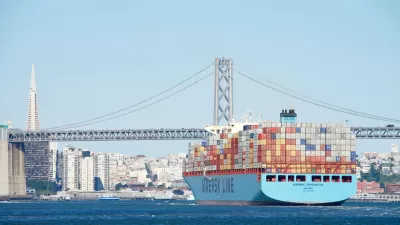Should the United States be watching Italy for lessons on how to contain and mitigate the coronavirus?
"The whole of Italy has been put on lockdown, as the government desperately tries to gain control of the coronavirus spread," reports Angela Dewan for CNN on Tuesday evening.
Italians are facing a new reality of life with a curfew, travel restrictions and enforced space between people in public places, as the country reports more than 9,000 infections and more than 630 deaths.
That's an increase of 167 deaths since Monday—a 36 percent jump in one day.
The restrictions were announced Monday night by Prime Minister Giuseppe Conte. In addition to travel restrictions, the measures include "a ban on all public events, the closures of schools and public spaces such as movie theaters, and the suspension of religious services including funerals or weddings," notes an earlier CNN report.
To enforce the movement ban, military police, railway police, and health workers are carrying out checks on transportation sites like highways and train stations.
This lockdown represents the toughest coronavirus response to be implemented outside of mainland China, and comes as the country buckles under the weight of the epidemic.
CNN has a slew of articles on the Italian restrictions posted Tuesday. This video by international correspondent Ben Wedeman accompanies all of them. His newscast mirrors most closely this article by Emma Reynolds and Rob Picheta that focuses particularly on the northern region of the country known as Lombardy
Lombardy President Attilio Fontana said in a statement said the new lockdown measures may not be enough.
"A necessary step but, I fear, still insufficient," Fontana said. "The numbers in Lombardy and in the rest of the country show that the contagion is constantly expanding, with all consequences we know starting with the overload of work in hospitals, in particular in intensive care."
Coronavirus mitigation measures – terminology
CNN favors the use of the word "lockdown", although the article also uses the term "red zone quarantine." Based on this NPR report with Sylvia Poggioli, who is based in Rome, posted Monday (audio available), it would appear that the two terms have similar meanings. Poggioli concludes at the end of the 3-minute audio version that the public is largely supportive of the quarantine measures.
Overall, there's been a huge consensus...that the quarantine is the only way to curb the spread of the virus...Italy could be a laboratory for the future – other countries may have to deal with this in the same way.
Beniamino Pagliaro, a journalist for national newspaper la Repubblica, who is cited extensively in the source article, conveys a similar message.
Reading news of the UK and United States, what they are doing is what we were doing two weeks ago. The pattern is very, very clear, like you are in denial because you think you can act in another way, but then facts and scientists tell us the only way is to slow down -- you cant stop it -- but slowing down the virus will mean a lot less problems in your hospitals.
Coronavirus update from CDC:
The Centers for Disease Control and Prevention webpage, "Coronavirus Disease 2019 (COVID-19) in the U.S.," updated March 10, 2020, shows:
- Total cases: 647, up from 99 on March 5 [see the base of post]
- Total deaths: 25, up from 10
- States reporting cases: 36 (includes District of Columbia), up from 13 on March 5
FULL STORY: 'We are not alone': Life under coronavirus lockdown in Italy

Planetizen Federal Action Tracker
A weekly monitor of how Trump’s orders and actions are impacting planners and planning in America.

Maui's Vacation Rental Debate Turns Ugly
Verbal attacks, misinformation campaigns and fistfights plague a high-stakes debate to convert thousands of vacation rentals into long-term housing.

San Francisco Suspends Traffic Calming Amidst Record Deaths
Citing “a challenging fiscal landscape,” the city will cease the program on the heels of 42 traffic deaths, including 24 pedestrians.

Amtrak Rolls Out New Orleans to Alabama “Mardi Gras” Train
The new service will operate morning and evening departures between Mobile and New Orleans.

The Subversive Car-Free Guide to Trump's Great American Road Trip
Car-free ways to access Chicagoland’s best tourist attractions.

San Antonio and Austin are Fusing Into one Massive Megaregion
The region spanning the two central Texas cities is growing fast, posing challenges for local infrastructure and water supplies.
Urban Design for Planners 1: Software Tools
This six-course series explores essential urban design concepts using open source software and equips planners with the tools they need to participate fully in the urban design process.
Planning for Universal Design
Learn the tools for implementing Universal Design in planning regulations.
Heyer Gruel & Associates PA
JM Goldson LLC
Custer County Colorado
City of Camden Redevelopment Agency
City of Astoria
Transportation Research & Education Center (TREC) at Portland State University
Jefferson Parish Government
Camden Redevelopment Agency
City of Claremont





























